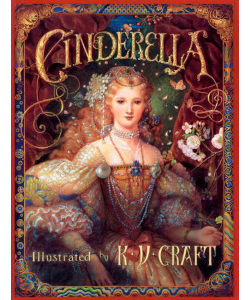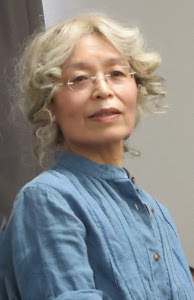Cinderella (Adaptation)

Content:
Cinderella
Illustrator:
K.Y. Craft ![]()
K.Y. Craft
Publication:
2000 by SeaStar Books
Genre:
Fairy Tales, Fiction, Folk Tales, Picture Books
Pages:
32
Current state:
This book has been evaluated and information added. It has been read but content considerations may not be complete.
Book Guide
Search for this book used on:
"Remember, if you stay one instant after the last stroke of midnight, your carriage will become a pumpkin... while you yoursell will appear just as humble as you did belore."
So goes the pronouncement ol Cinderella's fairy godmother as the ragged maiden, now masically transformed into a ravishing beauty, climbs into her magnificent coach and sets off for the prince's ball. Telling after telling, age after age, this vision continues to thrill and enchant readers, for Cinderella has become a forever-loved story that will never grow old.
With her exquisite touch, Kinoko Craft now brings a new warmth and depth to this kind girl who, though cruelly mistreated by her stepmother and stepsisters, wins the fair prince's heart. Luminous scenes, inspired by seventeenth-and-eighteenth-century France, are radiant and rich with astonishing detail.
For those who dream of fairy godmothers, lavish balls, and living happily ever after, here is a fantasy come true.
From the dust jacket
To view an example page please sign in.
Please sign in to access the type of illustrations and view more books with this type.
Content Guide
Please sign in to access all of the topics associated with this book and view other books with the same topics.
Please sign in to access the time periods this book takes place in and view other books in the same time period.
For information about the lead characters please sign in.
Please sign in to discover interesting content included in the illustrations of this book.
Resource Guide
Episode 70: Why Read Fairy Tales?
Released in 2020 by The Literary Life
Available formats: Streaming Audio
Length: 1 hr. 29 min.
View on the The Literary Life site
"Angelina Stanford and Cindy Rollins tackle the topic of fairy stories, discussing the what, why and how of reading them. Angelina shares the distinctive characteristics of fairy stories in contrast to other types of stories, such as myths. They deal with the question of whether fairy tales are 'escapist', the influence of the Grimm brothers scholarly work on interpreting fairy stories, and allowing the story to unveil its deeper truths without forcing meaning onto it.
Angelina gives an illustration of how to see the gospel messages in fairy tales by talking us through the story of Sleeping Beauty. She refutes the ideas that fairy tales are about human romance or are misogynistic. She also highlights some of the Enlightenment and Puritan responses to fairy tales that still linger with us today. Cindy and Angelina also discuss some common concerns such as the magical, weird, or scary aspects of fairy tales. Angelina also makes a distinction between folk tales, literary fairy tales, and cautionary tales."
Find This Book
Search for this book used on:



